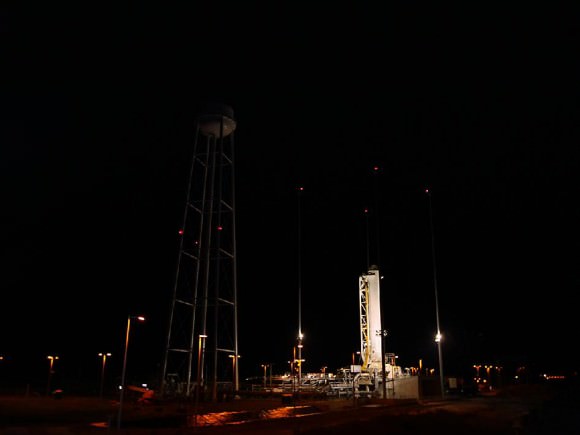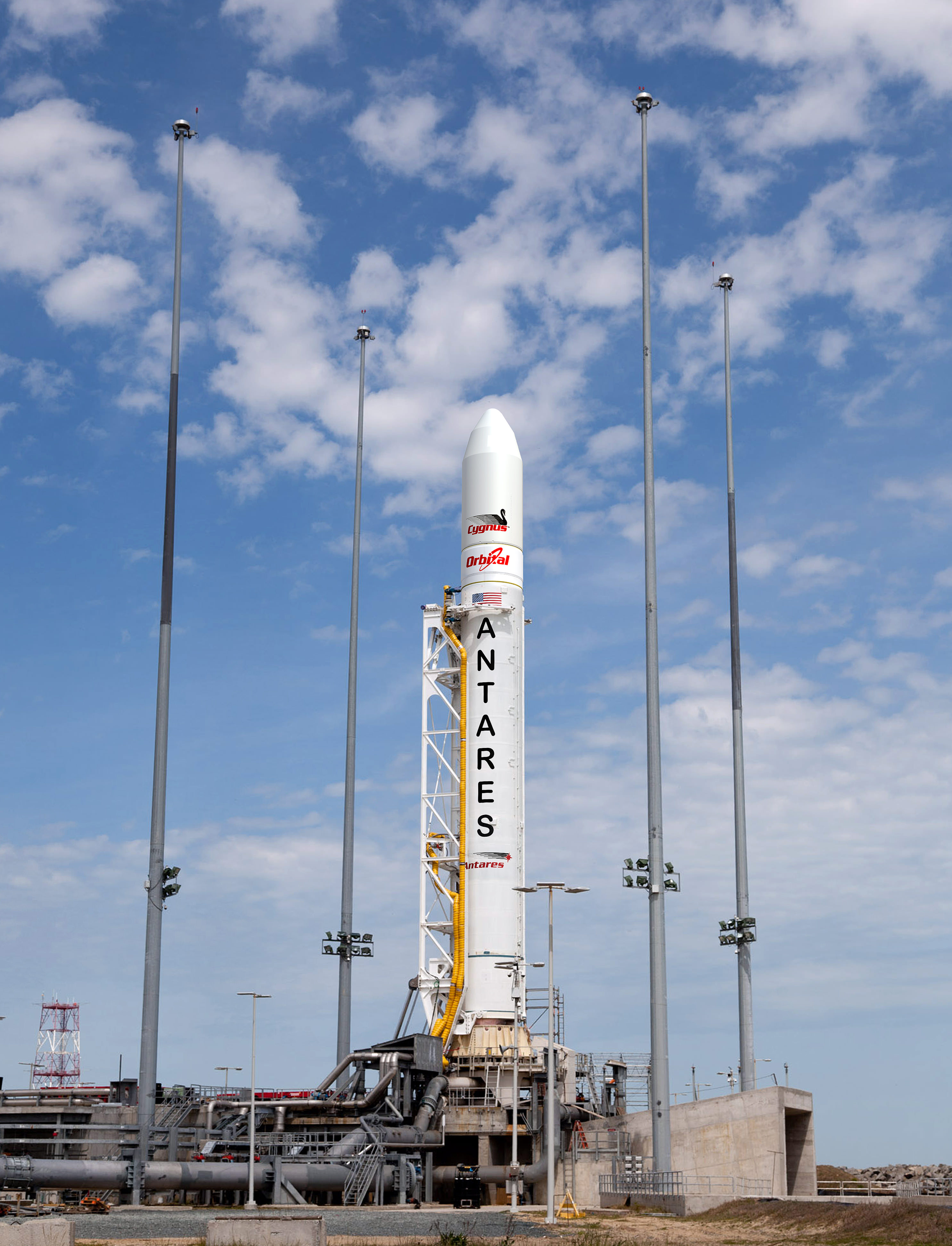Orbital Sciences Corporation has at last scheduled a critical engine test for the firm’s new commercially developed Antares medium class rocket for Feb. 12 at the Mid-Atlantic Regional Spaceport’s (MARS) Pad-0A.
NASA’s Wallops Flight Facility will provide launch range support for the Antares rocket test which is a key milestone on the path to a flight that is crucial for eventual resupply of the International Space Station (ISS).
The window for the 29 second long engine test is 6-9 p.m EST. There will be no live broadcast or formal viewing of the test since it is only operational in nature.
For this hot fire test only the first stage of the Antares rocket will be rolled out to the launch pad – the first of its kind constructed in America in several decades.

During the test, the Antares’ dual AJ26 first stage rocket engines will generate a combined total thrust of 680,000 lbs. In a unique capability for its duration, the rocket will be held down on the pad and accounts for the huge water tower built nearby.
The goal of the hot fire test is a complete checkout of the rocket’s first stage and all the support systems at Pad-0A being utilized for the first time.
Antares is the launcher for Orbital’s unmanned commercial Cygnus cargo spacecraft that NASA’s hopes will further reestablish American resupply missions to the International Space Station (ISS) lost with the shuttle’s shutdown.
If successful, a full up test flight of the 131 foot tall Antares with a Cygnus mass simulator bolted on top is planned for the maiden launch in roughly 4 to 6 weeks later, perhaps by late March 2013.
Antares/Cygnus will provide a similar service to the Falcon 9/Dragon system developed by SpaceX Corporation – which has already docked twice to the ISS during historic linkups in 2012.
Both the Orbital and SpaceX systems were developed under NASA’s Commercial Orbital Transportation Services (COTS) program to replace the ISS cargo capability previously tasked to NASA Space Shuttle’s.
A docking demonstration mission to the ISS would follow later in 2013 which would be nearly identical in scope to the SpaceX Falcon 9/Dragon demonstration flight successfully accomplished in May 2012.

The Antares first stage is powered by a pair of Soviet era NK-33 engines built during the 1960 and 1970’s as part of Russia’s ill-fated N-1 manned moon program. The engines have since been upgraded and requalified by Aerojet Corp. and integrated into the Ukrainian built first stage rocket as AJ-26 engines.
Tens of millions of US East Coast residents in the Mid-Atlantic and Northeast regions have never seen anything as powerful as an Antares rocket launch in their neighborhood.
“Antares is the biggest rocket ever launched from Wallops,” NASA Wallops spokesman Keith Koehler told me.


The re-tasking of the NK-33 engines is an interesting story involving a long and convoluted trail(?) and might make for an interesting story all on it’s own? The ‘Wiki-trail’ is interesting enough, but I’ll bet there’s more to it….
Heh, looks like someone’s who’s read a lot of sci-fi came up with the name for the Rocket.
Michael McCollum had an entire series based around Antares , apart from a lot of other books that refer to it.
Top picture is a recreation of what Cygnus rocket is suposed to be. It’s not a real picture.